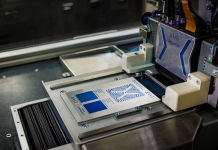Vaughan Patterson, Strategic Business Development Graphic Communications Group Ricoh South Africa outlines the importance of sustainable practices in print operations.
Sustainability has become a critical priority for businesses, including print service providers who are increasingly expected to reduce their environmental impact while meeting the demands of clients. This requires a re-evaluation of every stage of the printing process, from sourcing sustainable materials to optimising energy use and minimising waste. However, the path to sustainable printing can seem daunting, involving complex decisions and strategies.
The print industry is undergoing a global shift towards more sustainable practices, driven by new regulations and increasing consumer demand for eco-friendly products. In Europe, for example, new rules from January 2025 will require certain companies to report their ESG activities, particularly around carbon emissions, to work towards net-zero goals. But this movement goes beyond regulatory compliance; consumers are actively seeking businesses and brands that align with their values and are willing to pay a premium for sustainable options.
This shift affects the entire printing supply chain. The push for sustainability impacts not only large organisations but also the suppliers and service providers who must adapt to meet these new expectations. For example, print service providers supplying to companies subject to ESG reporting must ensure that their own practices align with sustainability requirements.
One of the first steps towards building a sustainable printing operation is understanding the facts. Misconceptions around sustainability abound, such as the belief that paper production always leads to deforestation. In fact, responsible forestry practices, including replanting initiatives, are helping to mitigate the impact of the paper industry. Similarly, digital printing is often seen as a more sustainable option, but this isn’t always the case. While digital printing can offer significant benefits, particularly for shorter print runs with less waste, responsible offset printing practices also have their place.
In many cases, digital printing does have a smaller environmental footprint compared to traditional offset printing, which is a more energy-intensive process. Offset printing involves the use of solvents, aluminium plates, and chemicals, while digital printing is generally more efficient and produces less waste. For example, in book printing, digital processes can automate production, reducing the time, resources, and CO2 emissions associated with each job.
Sustainability in printing isn’t just about the type of technology used. A truly sustainable operation requires optimising the entire workflow, from start to finish. This involves assessing every stage of the printing process for areas where improvements can be made. Material sourcing is a key consideration, with print companies increasingly partnering with paper merchants who prioritise responsible forestry and sustainable practices. Production processes also offer opportunities for improvement, such as minimising waste by streamlining workflows and automating tasks to eliminate unnecessary steps. Additionally, optimising supply chains by reducing transportation distances and the associated emissions plays an important role in lowering the overall carbon footprint.
Many businesses have already made significant strides towards more sustainable operations while simultaneously achieving cost savings. For example, Green Gift Cards, a UK company focused on sustainability, recognised the environmental impact of traditional plastic gift cards and partnered with Ricoh to transition to a more sustainable, paper-based solution. This shift aligned with their values and resonated with environmentally conscious consumers, proving that sustainability can be a key driver of business success.
Other companies have also implemented sustainability initiatives, positioning themselves as leaders in eco-friendly practices. One example is a direct mail company in Italy that has made sustainable paper sourcing and production a core part of its business strategy, attracting clients who share its values. Similarly, a Dutch printing company actively promotes its sustainability efforts, demonstrating transparency and building trust with clients who prioritise ethical business practices.
These real-world examples show that integrating sustainability into a printing business not only benefits the environment but can also drive commercial success. Sustainable practices can be a powerful marketing tool, helping companies differentiate themselves in an increasingly eco-conscious market.
Looking ahead, sustainability will continue to shape the future of the print industry. One emerging trend is the growing importance of sustainability as a marketing differentiator. More businesses are adopting sustainability as a core value and print companies that can clearly demonstrate their commitment to eco-friendly practices will have a competitive advantage. Transparency will also play an increasing role, with businesses expected to provide detailed information about the environmental impact of their processes, materials, and transportation methods. This focus on transparency is likely to extend throughout the supply chain, with print service providers needing to report on the carbon footprint of their products and services.
Sustainable printing is not only good for the planet but also a smart business move. By embracing sustainability, print companies can reduce their environmental impact, enhance operational efficiency, and improve their brand reputation. Through technologies such as digital presses, advanced automation, and sustainable paper sourcing, businesses can build a more sustainable and profitable future.
RICOH
https://www.ricoh.co.za/















